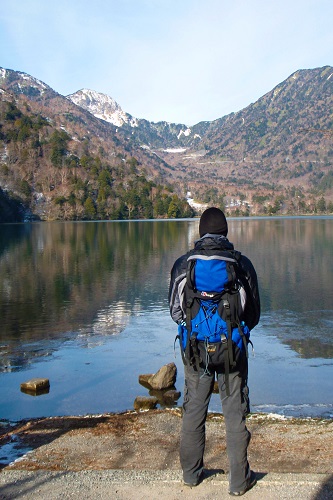The trolley creaks and strains under the teetering mountain of bags. One struggles to push while the other catches any falling debris. With an audible grunt they heave each bag onto the scales while the airline staff, unable to conceal their contempt, politely explain the hefty excess luggage fee. You'll see this couple again after you land. They'll be queuing behind a dozen others at the elevator as you saunter past and take the stairs. Learning to travel light completely changed the way we travel, and it's not as difficult as you might think.
Why Would I Want To Travel Light?
The main reasons to travel light are cost and convenience. The less you have to carry, the easier it is to move around and the less you have to rely on other people. If you need someone else to look after your baggage you often have to pay them to do so. Taxis and private transfers are also expensive. However, if you have more luggage than you can carry, using public transport or walking becomes a very daunting prospect. Travelling light is especially important if you are going to be moving around a lot during your trip.
Just like the first slimming club weigh in after Christmas, putting your bag on the check in scales when you know you've packed in too much chocolate can be stressful. Even worse however is standing near check-in filling a bin with anything you can spare and putting on multiple layers of clothes in tropical heat. This was all to avoid paying excess baggage charges that cost more than the flight itself. We don't recommend it. For those who can travel light, there's something satisfying about carrying your luggage up escalators and down stairs without breaking a sweat.

Travel Light: The Art Of Packing
What you actually need depends on the trip but there are a few principles you can apply to minimise what you carry.
Step 1: How Much Luggage Do I Want To Carry?
If you want to walk and use public transport, a large backpack and a smaller hand luggage bag is the practical limit for most people. Moving a second large bag is a chore and the frustration and costs will soon add up. Having everything in a single backpack will make life even easier, especially if it's small enough to be classed as hand luggage. Setting a limit on how much you want to carry will help you manage how much you pack.
Step 2: What Do I Need To Make This Holiday Happen?
The climate is going to dictate a lot of your clothing requirements but in general it's safe to assume you'll bring too much. Packing enough for 5-7 days should be sufficient. If you are travelling for longer, either find a laundry or hand wash anything you need. If luggage allowances are likely to be a problem, wear your heaviest clothing when you travel. This is especially important if you need cumbersome items like walking boots or a bulky coat. The contents of your coat pockets do not count towards your weight allowance.
If this is an activity holiday then any equipment you need to bring should be a priority. Will it cost more to rent gear than it does to bring it? If you plan only two days of scuba diving in a 3 week trip there's no point lugging 15 kilos of dive gear around. If you've planned a week of camping however, you'll probably need a tent. There's not much you can do about the size and weight of your equipment after you've bought it so it's worth bearing these factors in mind when buying new gear.
Downsizing Essential Items
There are several items that will accompany you on every trip. For most people a phone is the bare minimum but there are some who won't leave home without a laptop. Unless you will be typing a lot however, a tablet should meet your needs. Of course no independent traveller would be seen dead without their trusty guidebook and at least one dog-eared paperback. These days it's easy to load digital books onto your phone or tablet and save even more space. Then there's your camera, which could be anything from a pocket sized compact to an SLR with multiple lenses. Mirrorless cameras can provide a smaller alternative to an SLR and even some phone cameras give surprisingly good results. Of course you'll need to charge all of these devices too. A good international adapter with a couple of USB ports should save you having to carry multiple chargers.

You'll probably need to wash at some point during your trip. Travel sized toiletries are a great space saver although depending on your accommodation, you may be able to get by on the freebies provided. A microfibre towel is also a wise investment. If you're backpacking for any length of time, forget about luxury extras like make up and hair straighteners. After the first couple of days you won't use them.
Step 3: How Do I Fit Too Much Stuff Into A Bag That's Too Small?
Having things divided into small, tightly wrapped bundles is a good way to eliminate wasted space and organise your bag. Compression bags work well for clothes and make good padding around more fragile items. If checked baggage is limited, make the best possible use of your hand luggage allowance and any extra personal items you are allowed to carry separately.

At some point you'll probably find that you can't fit everything in. Packing more than you need is a natural tendency and we all do it. You'll need to be strict with the baggage limit you set for yourself and leave out anything that is not absolutely essential. Manage to travel light once and you'll be forever converted. The second time it will be even easier.
